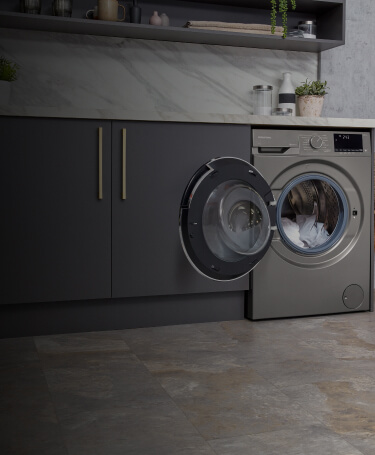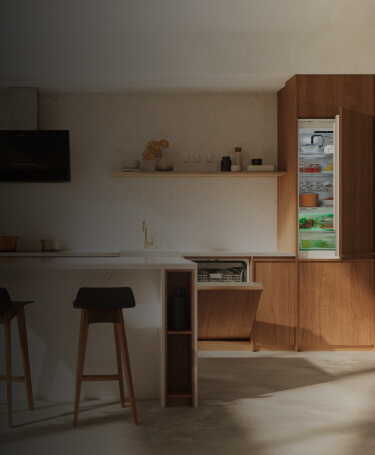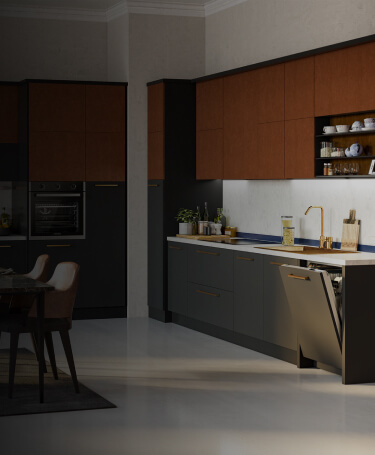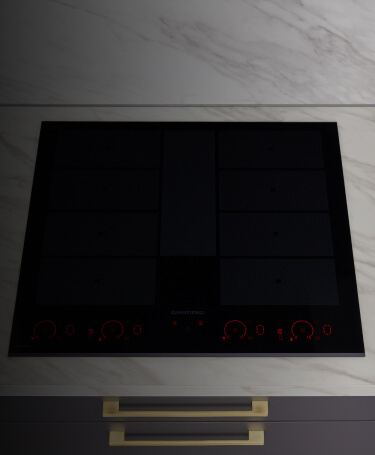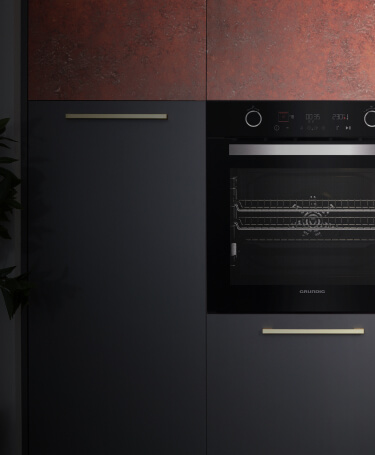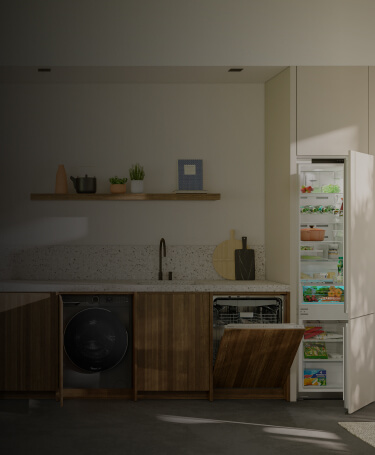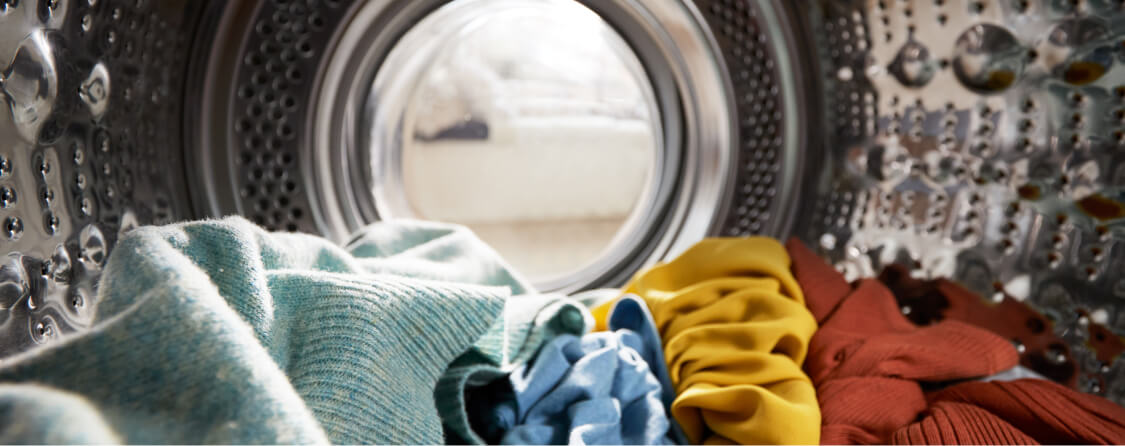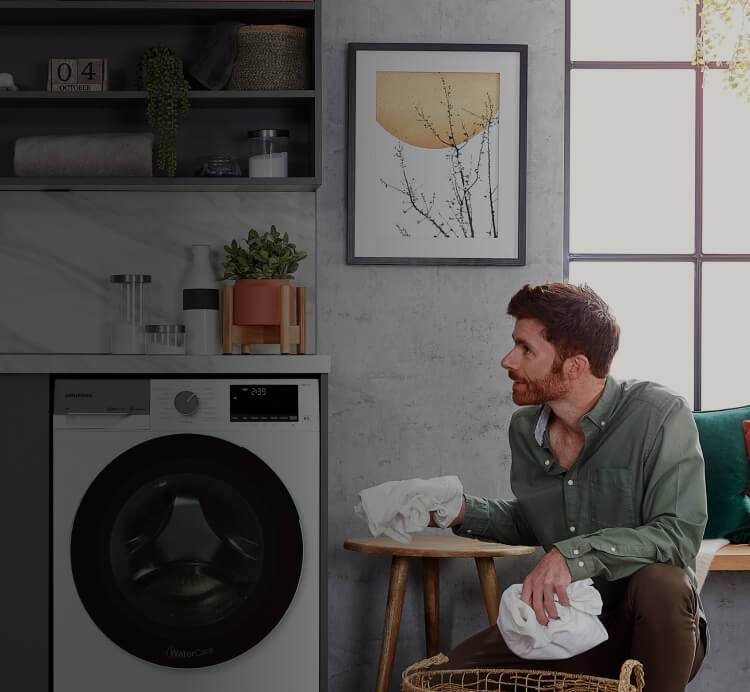
Discover our beautifully designed
energy efficient range
At Grundig, we’re proud of our ability to create beautifully designed products that enable everyday tasks to be easier and simpler, while also helping to reduce the impact on the environment.
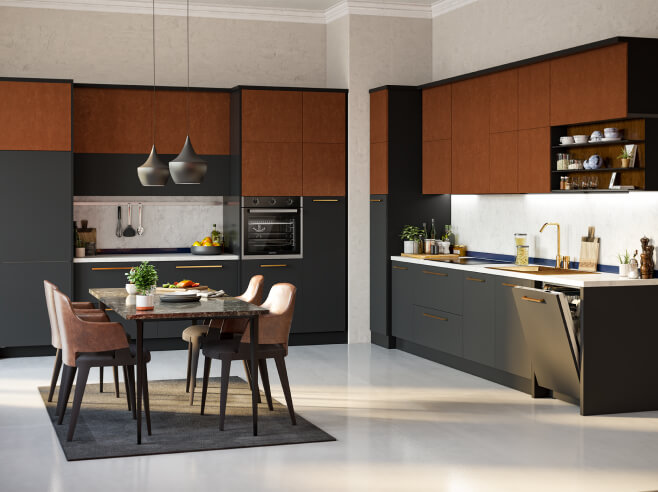
Reduce your household consumption with Grundig’s appliances
Did you know home appliances account for almost a third of energy bills[1]? Knowing how to use your appliances effectively is not only helpful for your purse strings but also the environment. Featuring top energy-rated models, our product range is designed to help reduce your energy and water usage.
Stylish appliances designed to make life easier

Top tips on how to use your appliances more effectively.
At Grundig, we strive to minimise the impact we have on the environment, and we are committed to bringing energy efficient products to the market. To help you use your appliances more effectively, we’ve pulled together our top tips below.
Achieve a more energy efficient wash with Grundig
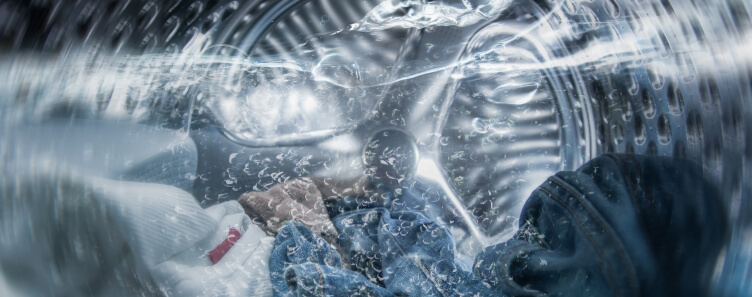
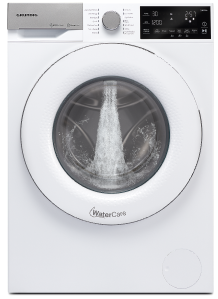
The eco programme is the most energy efficient programme to use on your washing machine
When using your machine, select the eco programme whenever possible. This will save a significant amount of energy and water for a standard load, whilst still maintaining excellent cleaning results.
Select a low temperature for your wash
When the eco programme is not suitable, select a lower temperature on your chosen wash programme to save up to 40% in energy consumption. [2] However, the eco programme remains the best programme to use in terms of energy and water consumption.
Pre-treat your clothes
and fill your machine to capacity
To reduce the number of loads you are having to wash, make sure to fill your machine to capacity, but avoid overfilling. Pre-treating heavily stained items of clothing also prevents the need to rewash garments.
In the market for a new energy saving
washing machine or washer dryer?
When looking for a new appliance, consider the machine’s energy efficiency class. The higher the class, the more energy efficient it is. Our laundry range features top rating A energy class washing machines.
Save up to £219*
per year in energy with Grundig Washer Dryers
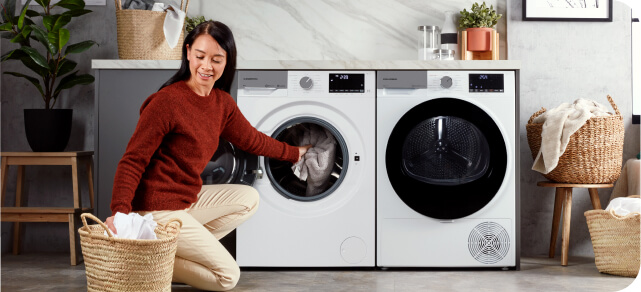
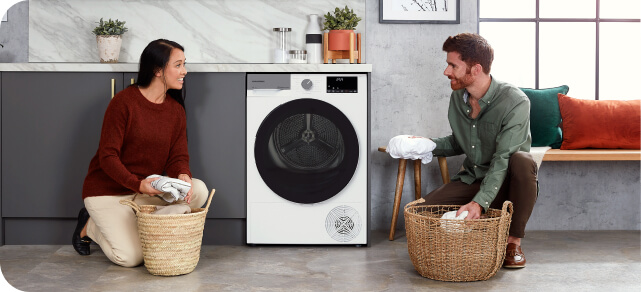
Save up to £441*
per year in energy with Grundig Tumble Dryers
Increase the efficiency of your dishwasher with Grundig
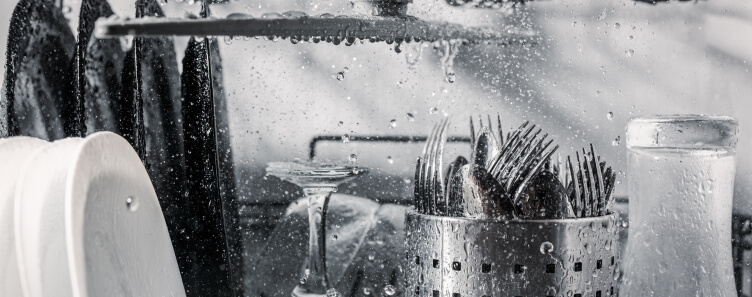

The eco programme is the most energy efficient programme to use on your dishwasher
By selecting the eco programme on your machine, you can save a significant amount of water and energy, whilst still maintaining excellent cleaning results. Our dishwashers boast high energy ratings and low water consumption, so you can be sure that your wallet and the environment are being well looked after.
Run the dishwasher when it is full
To reduce the energy consumption of your dishwasher, make sure your machine is full before starting a programme. Alternatively, if you need to start a cycle before your appliance is full, select the half load function for smaller loads.
Don’t pre-rinse dishes before
putting them in your dishwasher
Make sure to scrape food from plates before running a cycle and avoid pre-rinsing dishes. This will save water and energy, whilst also protecting your machine from blockages.
In the market for a new dishwasher?
Pay attention to the energy efficiency rating of the appliance, the higher the energy class the more efficient it is. Grundig’s range offers several C rated dishwashers that deliver valuable energy savings. It is also important to consider the dishwasher’s water consumption.
Spend from 26p*
per cycle in energy costs
with Grundig Dishwashers
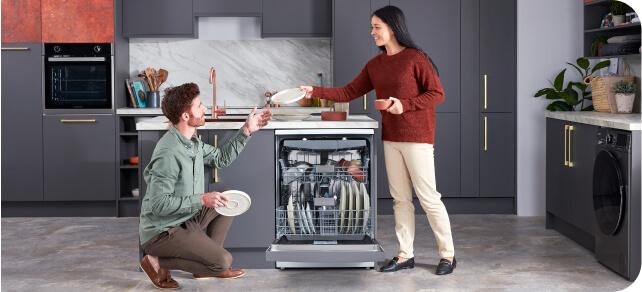

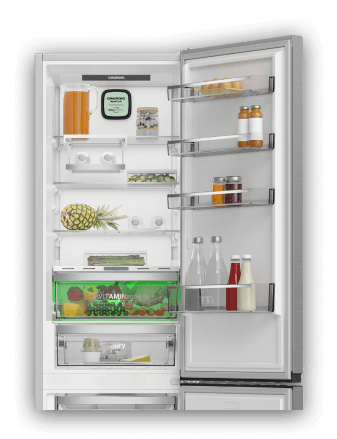
Use your fridge more
efficiently with Grundig
Keep your fridge door closed
Try to limit the number of times you open the fridge door and avoid keeping it open for too long. Opening the door increases the internal temperature of your appliance, meaning more energy is needed to re-regulate the temperature.
Maintaining the performance of your fridge
When installing your appliance, make sure there is adequate ventilation space around it to prevent the cooling system from overworking. For those with a manual defrost freezer, defrost your appliance every six months or once per year, depending on your usage habits, to prevent your appliance from overworking.
Storing food correctly
Try to keep your fridge at least 2/3 full to allow sufficient room for cool air to circulate, and make sure to utilise the compartments. Cheese and fish are best stored in the chiller section and fresh food should be stored in a 4-star rated freezer. We recommend keeping your fridge set to 3-5°C and your freezer set to -18°C. To maintain these temperatures, avoid putting hot food in the fridge.
Searching for a new energy efficient fridge?
When looking for a new fridge, pay attention to the model’s energy efficiency rating and look for technologies that keep food fresh for longer. Our refrigeration range features a vast array of food preservation technologies, such as VitaminZone drawers that preserves the vitamins in your fruit and vegetables for longer.
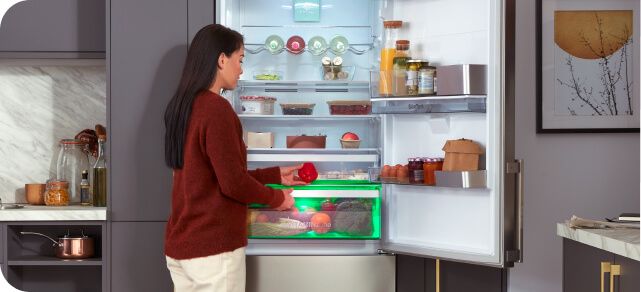
Save up to £88*
per year in energy with
Grundig Fridge Freezers
Reduce your oven's energy consumption with Grundig
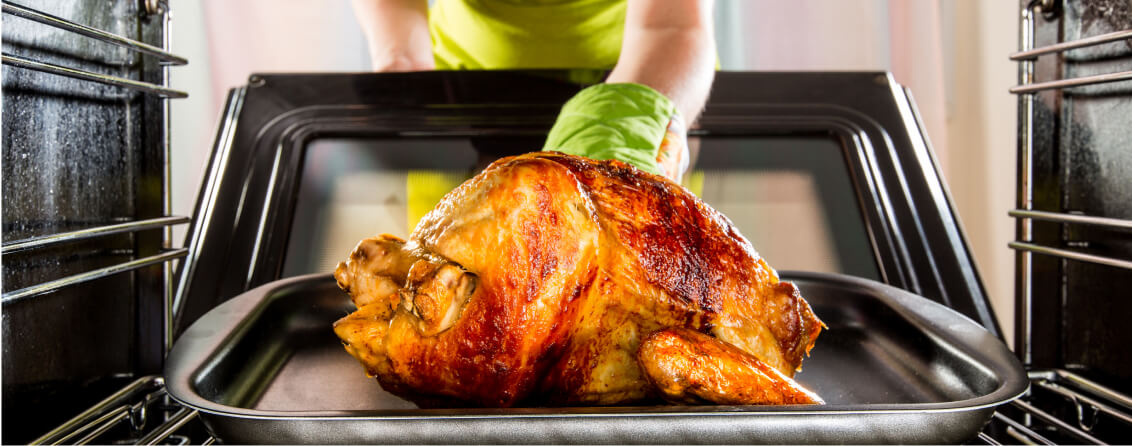
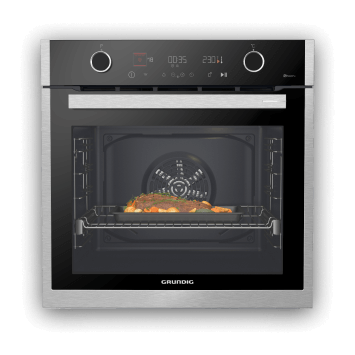
Make sure to use your oven efficiently
Avoid opening the oven door when cooking to save up to 25% in lost energy[3]. Ensure food is defrosted thoroughly before cooking and avoid preheating whenever possible. Turning the oven off 10 minutes earlier on selected foods and allowing the remaining heat to finish the cooking can also save up to 10% of energy.[4]
Reduce the heat on your true fan oven
When using a true fan oven, you can reduce the temperature by 20°C to save energy whilst still achieving the same results as a standard oven. For those looking for a new oven, our HotAero Pro models ensure even heat distribution, delivering more even cooking results every time.
In the market for a new oven?
Pay attention to the model’s energy efficiency rating and look for technologies that are designed to reduce energy consumption. Our Divide&Cook technology allows to cook two dishes at different temperatures, without any mixture of flavours. The divider can also be used when cooking smaller meals, saving a significant amount of energy by only heating the section required.
In the market for a new hob?
Using magnetic currents and coils to generate heat, induction hobs are the most efficient product type when compared with ceramic and gas hobs. By only heating the pan surface used, these advanced appliances save a significant amount of energy compared to a gas hob.
Frequently Asked Questions
How much does it cost to run a tumble dryer?
The running cost of a tumble dryer will vary depending on the type of dryer you own. There are three main types of tumble dryers: vented tumble dryers, condenser tumble dryers, and heat pump tumble dryers The main differences between these appliances centre on the way each model extracts hot air. Using a lower temperature to dry the load, Heat Pump tumble dryers are the most energy-efficient tumble dryers on the market and can save over £130 a year in running costs when compared to a standard condenser dryer. [5] For more information on the different types of tumble dryers, please click here.
On average, a condenser tumble dryer costs £668 to run per year[6]. In comparison, a heat pump tumble dryer costs £227 to run on average per year.[7] To figure out the precise cost of your tumble dryer, you will need to check the kWh usage of your dryer and multiply this by your tariff costs, along with how often you use your appliance. If you own a Grundig tumble dryer, the kWh usage of your appliance can be found on our website. To find this information, simply insert your model number into the search bar on our site and click through to your product’s page. Once on this page, scroll down to the product specification section where the consumption value can be found under the ‘product fiche information’ tab.
[5] Household Hacks by AMDEA
[6] Uses the YourEko tool calculation that compares the annual energy
consumption of all condenser dryers in the market,
based on the Cotton cupboard dry programme (used by the EU Energy Label Standard) and 260 cycles
per year. Energy tariff of 34p kWh.
Date of calculation: November 2022.
[7] Uses the YourEko tool calculation that compares the annual energy
consumption of all heat pump dryers in the market,
based on the Cotton cupboard dry programme (used by the EU Energy Label Standard) and 260 cycles
per year. Energy tariff of 34p kWh.
Date of calculation: November 2022.
How much electricity does a tumble dryer use?
Similarly, to running costs, the amount of energy used by a tumble dryer will vary depending on the model you own. Installing a smart meter in your home will allow you to accurately view how much energy you are using in real-time. The monitor will show how much energy is being used by a particular appliance, allowing you to see how much energy your tumble dryer uses, along with how much your tumble dryer costs per hour. A smart meter will also be able to answer the question ‘how much electricity does a tumble dryer use?’.
How much does it cost to run a dishwasher?
On average, a full-size dishwasher costs £97 to run per year.[8] In comparison, a slimline dishwasher costs £83 on average to run per year.[9] If you wish to learn the precise running costs of your dishwasher, you will need to check the kWh usage of your model and multiply this by your tariff costs, along with how often you use your appliance. If you own a Grundig dishwasher, the kWh usage of your appliance can be found in your product manual. Alternatively, it can be found on our website. To find this information, simply insert your model number into the search bar on our site and click through to your product’s page. Once on this page, scroll down to the product specification section where the consumption value can be found.
[8] Uses the YourEko tool calculation that compares the annual energy
consumption of all Full-Size Dishwashers in the market,
based on the Eco programme (used by the EU Energy Label Standard) and 254 cycles per year.
Energy tariff of 34p kWh. Date of
calculation: November 2022.
[9] Uses the YourEko tool calculation that compares the annual energy
consumption of all Slimline Dishwashers in the market, based on the Eco programme (used by the
EU Energy Label Standard) and 254 cycles per year. Energy tariff of 34p kWh. Date of
calculation: November 2022.
How much does it cost to run a washing machine?
On average, a washing machine costs £76 to run per year.[10] In comparison, a washer dryer costs £409 to run on average per year.[11] If you wish to learn the precise running costs of your washing machine, you will need to check the kWh usage of your model and multiply this by your tariff costs, along with how often you use your appliance. If you own a Grundig washing machine, the kWh usage of your appliance can be found in your product manual. Alternatively, it can be found on our website. To find this information, simply insert your model number into the search bar on our site and click through to your product’s page. Once on this page, scroll down to the product specification section where the consumption value can be found.
[10] Uses the YourEko tool calculation that compares the annual energy
consumption of all washing machines in the market, based on Eco 40-60 programme (used by the EU
Energy Label Standard) and 284 cycles per year. Energy tariff of 34p kWh. Date of calculation:
November 2022.
[11] Uses the YourEko tool calculation that compares the annual energy
consumption of all washer dryers in the market, based on the wash and dry programme (used by the
EU Energy Label Standard) and 284 cycles per year. Energy tariff of 34p kWh. Date of
calculation: November 2022.
How much does a fridge cost to run?
On average, a tall fridge costs £68 to run per year.[12] In comparison, an under-counter fridge costs £62 on average to run per year.[13] If you wish to learn the precise running costs of your fridge, you will need to check the kWh usage of your model and multiply this by your tariff costs, along with how often you use your appliance. If you own a Grundig fridge, the kWh usage of your appliance can be found in your product manual. Alternatively, it can be found on our website. To find this information, simply insert your model number into the search bar on our site and click through to your product’s page. Once on this page, scroll down to the product specification section where the consumption value can be found.
[12] Uses the YourEko tool calculation that compares the annual energy
consumption of all upright fridges in the market based on
the EU Energy Label Standard. Energy tariff of 34p kWh. Date of calculation: November
2022.
[13] Uses the YourEko tool calculation that compares the annual energy
consumption of all upright, undercounter fridges in the market based on the EU Energy Label
Standard. Energy tariff of 34p kWh. Date of calculation: November 2022.
How much does it cost to run a fridge freezer?
On average, a combi fridge freezer costs £134 to run per year.[14] To calculate the running costs of your specific model, you will need to multiply the kWh usage of your model by your tariff costs, along with how often you use your appliance. If you own a Grundig fridge freezer, the kWh usage of your appliance can be found in your product manual. Alternatively, it can be found on our website. To find this information, simply insert your model number into the search bar on our site and click through to your product’s page. Once on this page, scroll down to the product specification section where the consumption value can be found.
[14] Uses the YourEko tool calculation that compares the annual energy consumption of all combi (50/50, 60/40, 70/30 and 80/20 split) fridge freezers in the market based on the EU Energy Label Standard. Energy tariff of 34p kWh. Date of calculation: November 2022.
*Please see below the relevant disclaimers by category for our energy saving claims:
Washer Dryer - Using the YourEko tool calculation that compares the most efficient Grundig model
(GWDI8542) against the least
efficient model on the market (looking at ‘8kg’ segment) , considering an annual energy consumption
based on the wash and dry
programme (used by the EU Energy Label Standard) and 284 cycles per year . Energy tariff of 34p kWh.
Date of calculation: November 2022.
Tumble Dryer - Using the YourEko tool calculation that compares the most efficient Grundig model (GT541023C) against the least efficient model on the market (looking at ‘10kg’ segment), considering an annual energy consumption based on the Cotton cupboard dry programme (used by the EU Energy Label Standard) and 260 cycles per year. Energy tariff of 34p kWh. Date of calculation: November 2022.
Dishwasher - Based on the energy consumption of running the Eco programme (used by the EU Energy Label Standard) once on the Grundig GNFP4630DW, considering an energy tariff of 34p kWh. Date of calculation: November 2022.
Fridge Freezer – Using the YourEko tool calculation that compares the most efficient Grundig model (GKN67920D) against the least efficient model on the market (looking at ‘70/30, 500-599L’ segment), considering an always on annual energy consumption based on the EU Energy Label Standard. Energy tariff of 34p kWh. Date of calculation: November 2022.
**Compared to standard B rated appliances
[1] Top Five Energy Consuming Home Appliances by Energy Saving Trust
[2] Save Energy In Your Home by Energy Saving Trust
[3] Household Hacks by AMDEA
[4] Household Hacks by AMDEA
[5] Household Hacks by AMDEA





